Recently, we bought more peaches than we needed for a recipe, and turning them into a fruit compote was an easy and delicious way to use them up. What’s also great is the fruit doesn’t have to be fully ripe to enjoy this sweet treat.
So how do you make a fruit compote? Fruit Compote is made by cooking pieces of fruit with sugar. This can either be through cooking it down in a pot or quickly in a skillet. The juices from the fruit and sugar form a syrup which can be flavored with spices and/or liquor.
In this article, we’ll talk more in depth about all of the wonderful ways you can make a unique compote that’s all your own, no matter what fruit you have on hand. We’ll also discuss some of the possible ways you can use it!
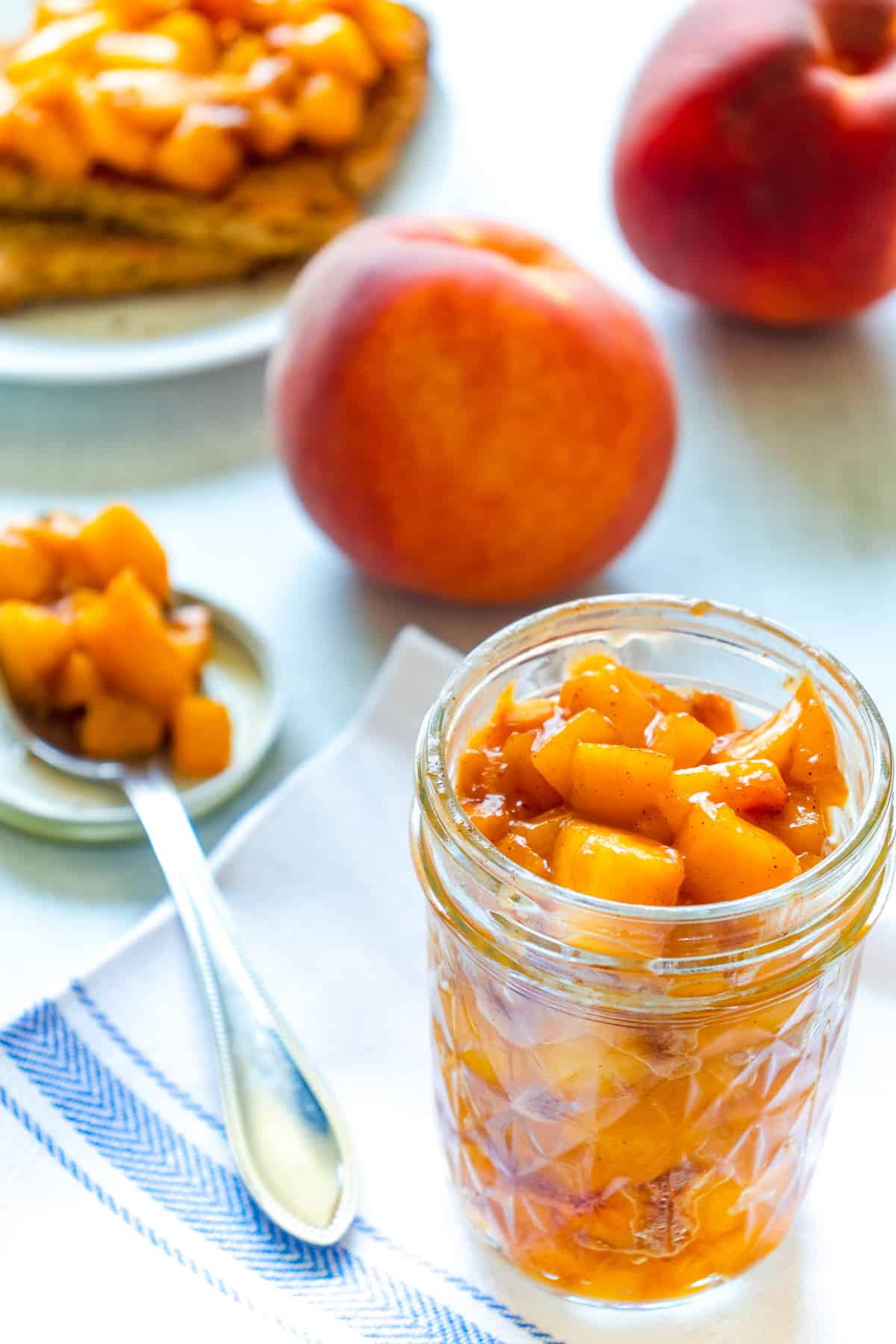
What Makes a Compote a Compote?
In its simplest form, fruit compote is just pieces of fruit (whole or small chunks) cooked in sugar.
Compote has been made as a dessert sauce since medieval times in Europe and hasn’t really changed much over the years. In eastern Europe, dried fruit is typically used.
The best part is that you can use just about any type of fruit to make a compote: fresh, frozen or dried, it’s all fair game. Plus, it’s ready to eat in about 10 minutes.
Is Compote the Same as Jam or Jelly?
There are a lot of fruit sauces and spreads. But how do you tell them apart from compote?
The biggest difference between these and compote is that they’re meant to be canned, preserved and eaten at another time. Compote is meant to be consumed not long after it’s made, and it’s a lot easier to make as a result!
For reference, here’s a quick rundown of how you can tell the difference between compote and other fruit sauces.
| Fruit Sauce Type | What’s in it? |
|---|---|
| Compote | Whole fruit or fruit chunks + sugar |
| Jelly | Fruit juice + sugar |
| Jam | Chopped or pureed fruit + sugar |
| Preserves | Whole fruit or fruit chunks + sugar |
| Marmalade | Whole citrus (either chopped or left intact) + sugar |
| Chutney | Chopped or pureed fruit + sugar + vinegar + spices |
| Coulis | Pureed and strained, uncooked fruit + sugar |
How Do You Make Fruit Compote?
Fruit compote is very easy to make because at a minimum it only really requires the fruit. You technically don’t have to add sugar because there’s plenty of fructose (fruit sugar) that will dissolve into syrup when cooked down.
Basic Fruit Compote Ingredients
- Fruit or combination of fruit of your choice (ideally firm fruit)
- Sugar (optional)
- Flavorings (optional)
- Thickener (optional)
However, you can jazz it up with different sugars (for a thicker, sweeter syrup), spices, extracts and even liquor for more complex flavors. How decadent you make it is completely up to you.
Here are some popular ingredients to cook into your compote.
- Cinnamon
- Ginger
- Cloves
- Orange zest
- Lemon zest
- Vanilla extract
- Brown sugar
- Bourbon
- Cognac
Butter is also a nice addition for a richer, creamier flavor and mouthfeel.
How Do You Thicken Fruit Compote?
Thickening fruit compote is as simple as mixing a tablespoon of cornstarch into one tablespoon of cold water or liquor and adding it into the compote as it’s cooking. This is called a slurry.
But how do you thicken compote without cornstarch? Here are a few ways.
- Substitute an equal amount of arrowroot powder for cornstarch.
- You can simply bring the compote to a boil and then lower to a simmer until the liquid has reduced and the mixture is thick and syrupy.
- You can also add in extra sugar or dried fruit to thicken the compote. This will consequently make it sweeter.
Try This Quick and Easy Peach Bourbon Compote
Here’s what we did with our leftover peaches. These particular peaches were taking forever to ripen, but this is actually ideal for compote. If you cook down ripe fruit, it can potentially turn into mush.
It can also be more difficult to peel and dice fruit when it has softened, especially for stone fruits. But since these peaches were still firm, it was quite simple.
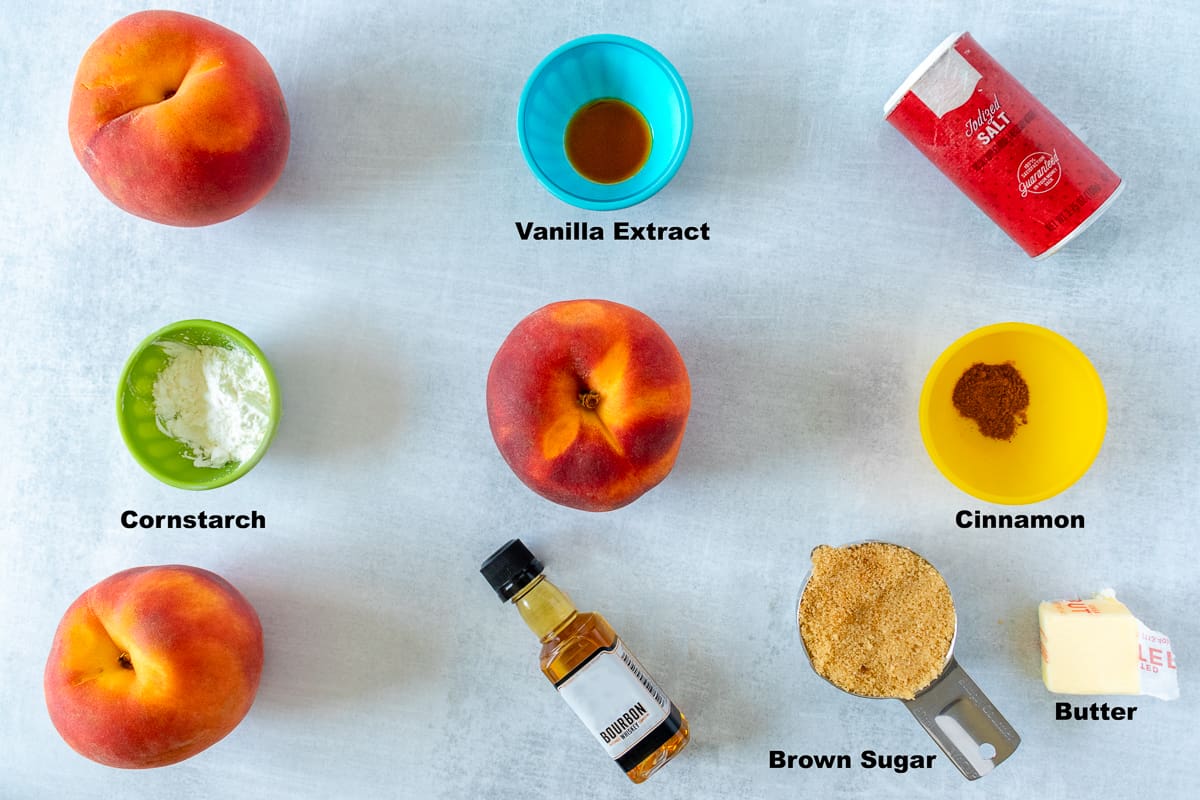
We used brown sugar, cinnamon, bourbon, vanilla and butter to create a velvety, sweet compote out of our peaches.
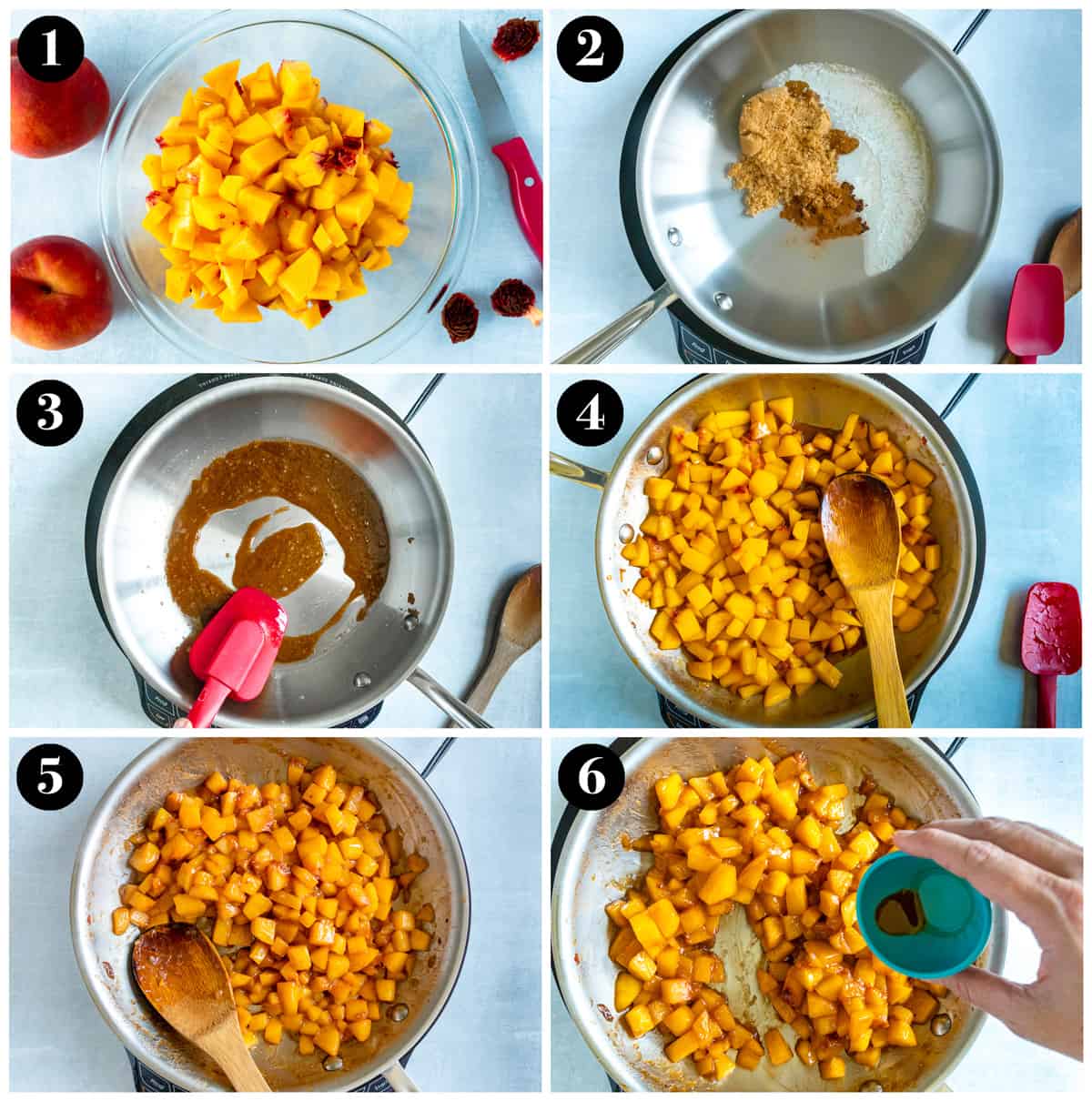
Instructions:
- Peel and dice 3 medium firm peaches.
- Melt a tablespoon of butter over medium heat. Add a 1/4 cup of brown sugar and 1/4 teaspoon cinnamon to the pan.
- Stir and cook until the brown sugar has dissolved into the butter.
- Add the chopped fruit and a pinch of salt, and cook it until it has softened and some juices have released about 4 minutes, stirring occasionally.
- Dissolve 1 tablespoon of cornstarch into 1 tablespoon of bourbon. Stir this slurry into the fruit and cook a few minutes longer.
- Remove from heat, add 1/2 teaspoon of vanilla and let the mixture cool completely before using.
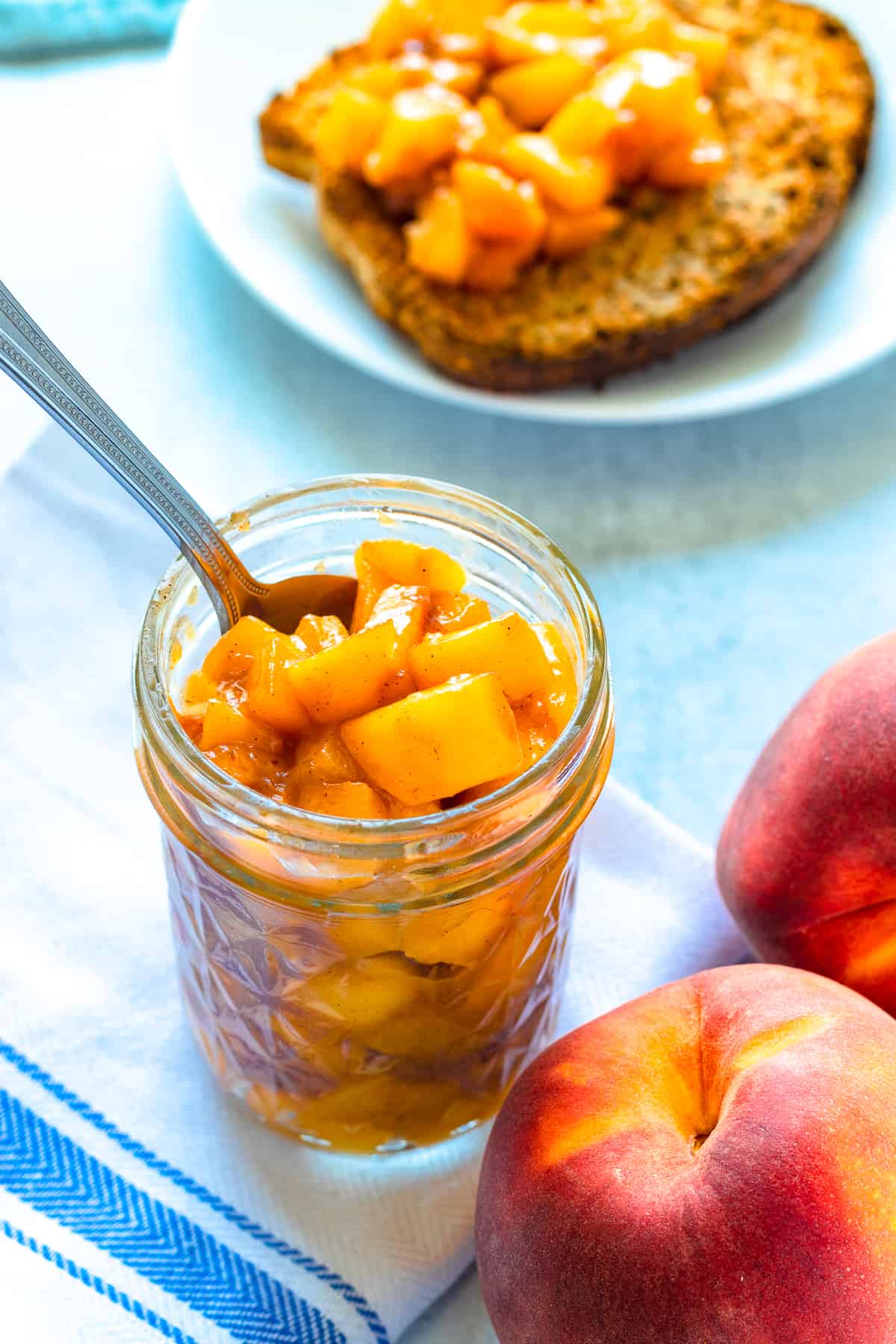
How to Make Fruit Compote Without Sugar
If you don’t want to use added sugar, you can leave it out and rely on the natural fruit sugars to sweeten the compote. Alternately, you could stir in a few drops of liquid Stevia or other natural sweetener like honey or maple syrup at the end.
How to Make Mixed Fruit Compote
The beauty of a compote is that you can use just about any fruit and any combination you desire. Here are a few combinations we like:
- Apples and Pears
- Strawberries and Rhubarb
- Mixed Berries (Blueberries, Raspberries, Blackberries)
- Blueberry Lemon
- Summer Fruit Compote (cherries, strawberries, peaches)
Can I Make Compote With Frozen Fruit?
Yes, compote can be made with frozen fruit. For example, a frozen berry compote of strawberries, blueberries and cherries can be made in a pot without adding any additional liquid. Just cook it down on medium heat until it’s thick and syrupy.
Why Add Lemon Juice To Fruit Compote?
Some compote recipes call for lemon juice, but this is mostly optional. If you were to make a jam or preserve with a low acid fruit, such as apples or pears, you’d need the citric acid to make it safe for canning. It will, however, slow the fruit from browning faster.
Since compote is meant to be eaten shortly after it’s made, the lemon juice is unnecessary unless you want to add some tartness to an otherwise sweet dish.
Can Compote Be Canned or Preserved?
Technically, no. Unlike jelly and fruit preserves, compote is meant to be made fresh. This is why making a compote is ideal for enjoying fresh seasonal fruits. If refrigerated, it can be consumed within 2 weeks.
How to Use Fruit Compote?
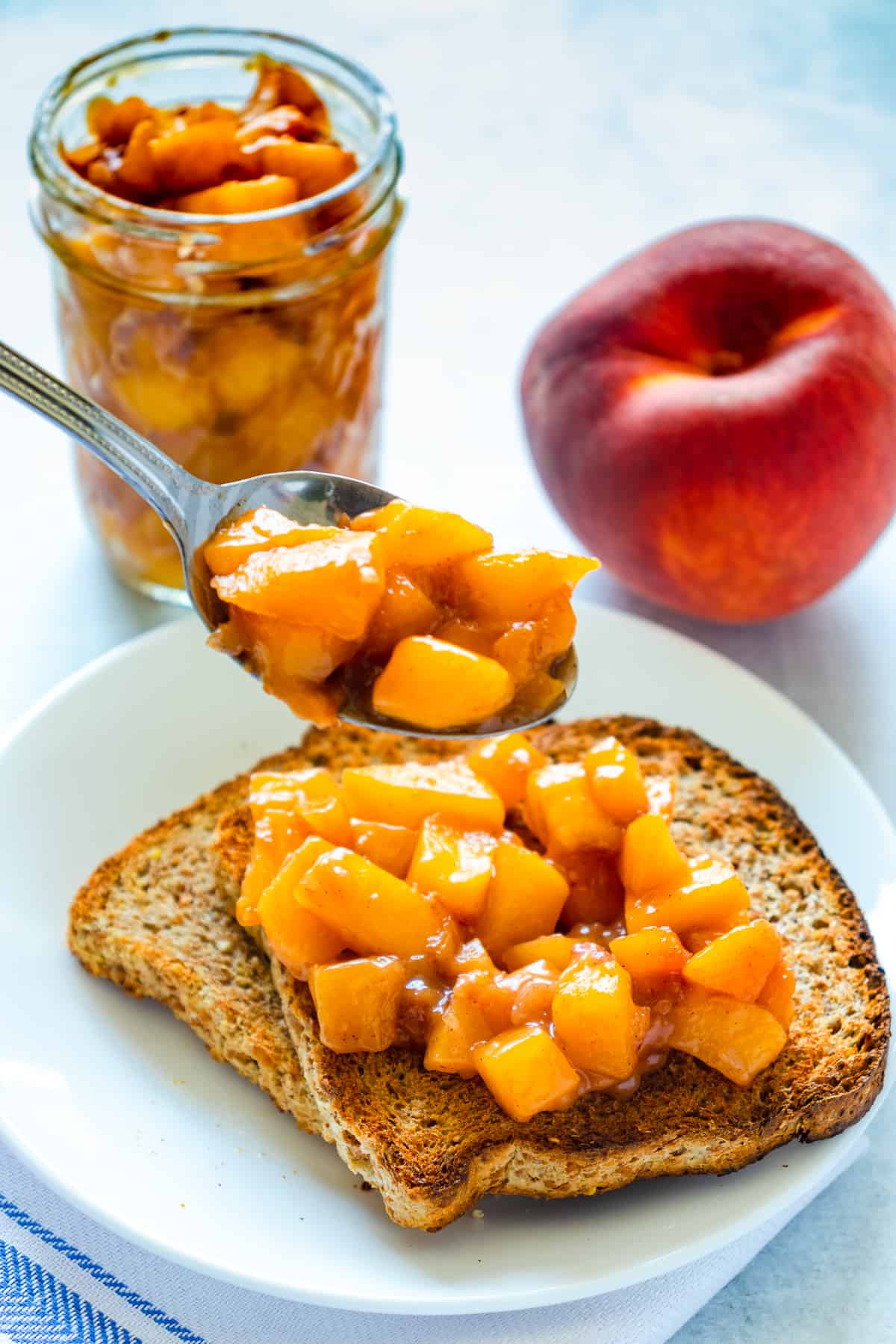
Depending on what you’re using it for, compote can be served as a dessert on its own or as a sweet topping as part of another dessert. Compotes go great with pancakes and waffles. Check out our Cheddar Waffles with Apple Pear Compote for example. They can also be used on and in many things such as:
- French Toast
- Pound Cake
- Toast
- Cheesecake
- Ice Cream
- Layered with yogurt or custard
- Smoothies
- Cheese plates
- Oatmeal
- Burger toppings

Leave a Reply